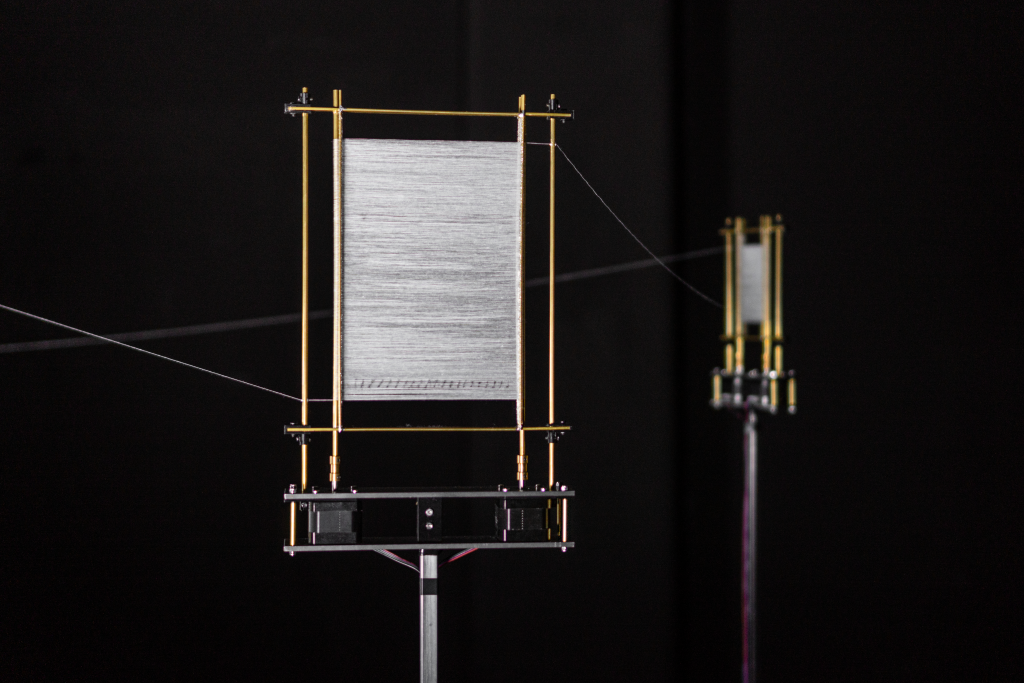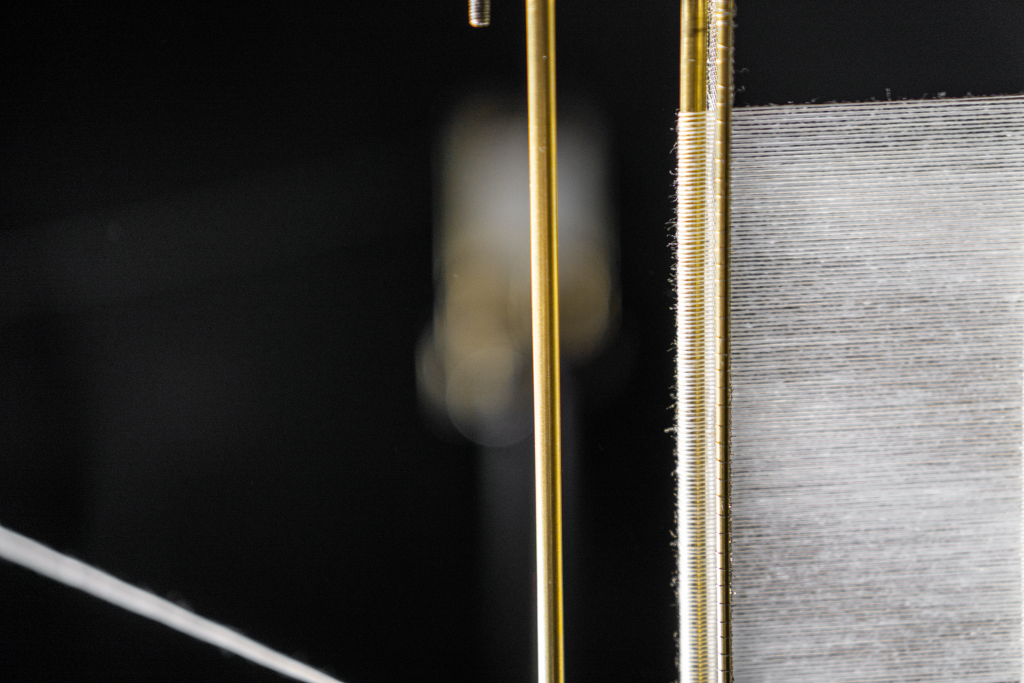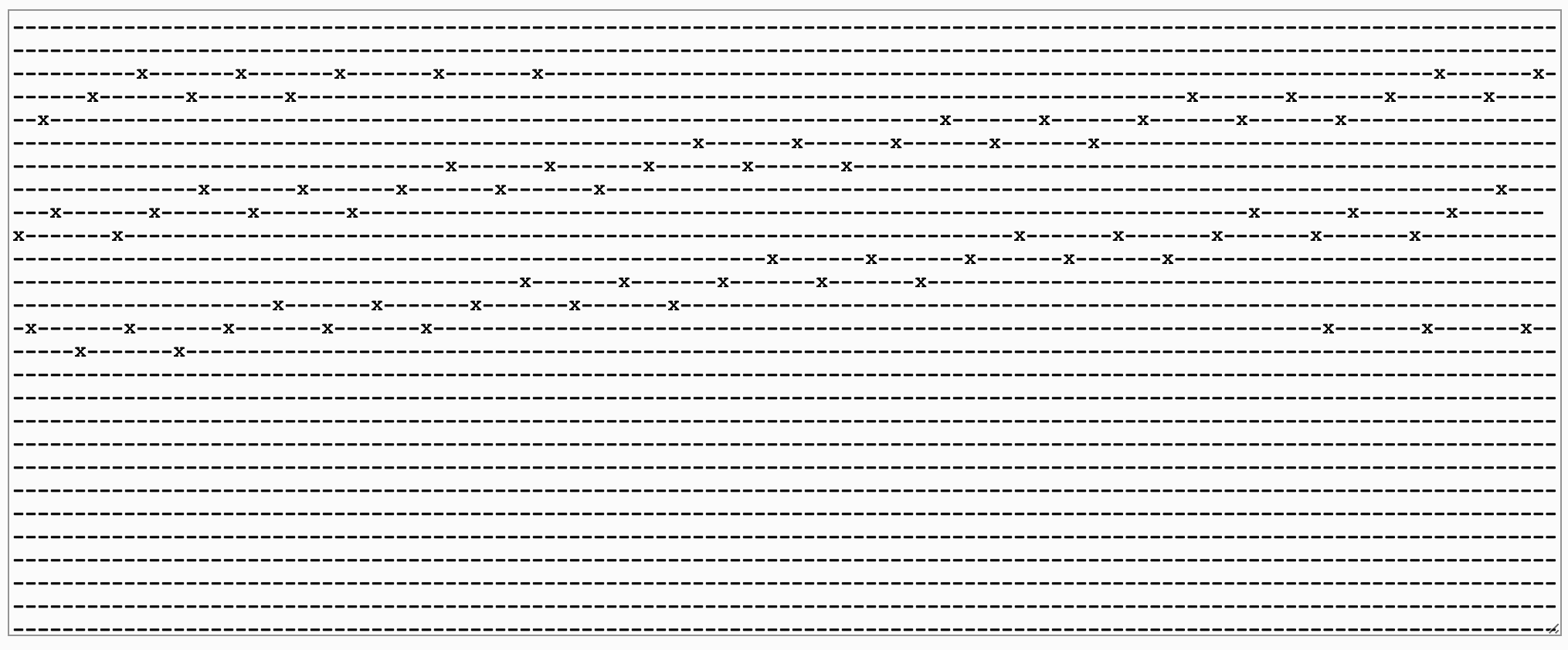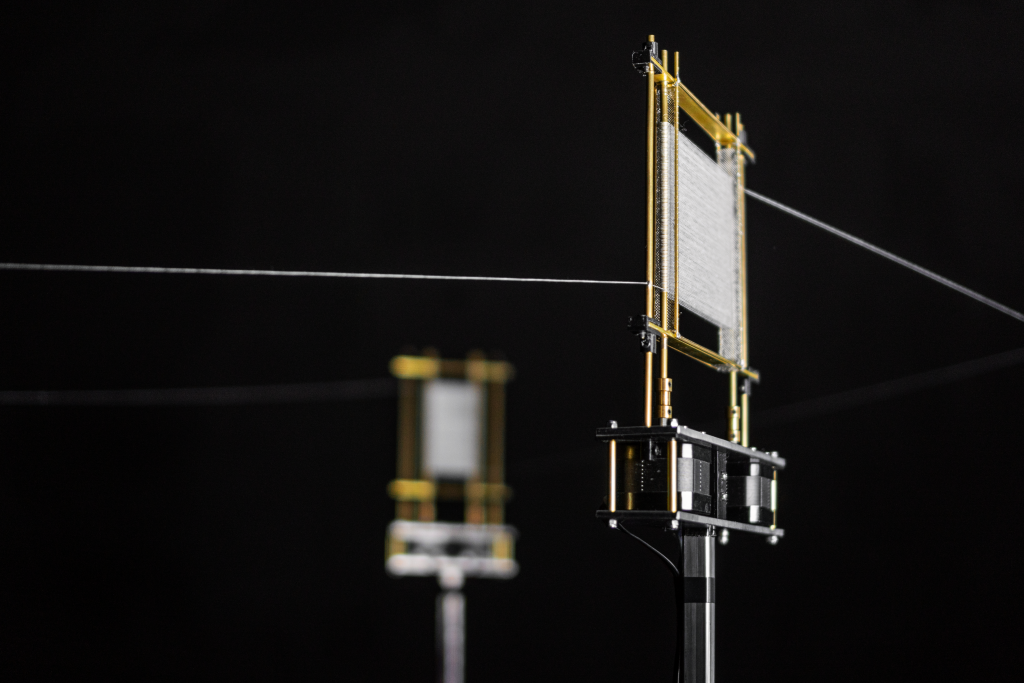
On Framing Textile Ambiguities
Artistic Research on Situated Objectivities at the Intersection of Textile Processing and Computer History.
Digitale Medien BA
bei Prof. Ralf Baecker Prof. Dr. Andrea Sick
The installation On Framing Textile Ambiguities is the output of a critical investigation on social and technical developments that led to the current local technological situation.
Beyond being a metaphor for the theoretical framework of Donna Haraway‘s Situated Knowledges, the thread that wanders through the installation reminds of the history of digital communication media and computer arts with an emphasis on the interconnectedness with the history of textile production.
Central to this investigation was the local and material basis and bounding, that everyone, everything and every medium has. This inevitable materiality has been described by Haraway as an important part of knowledge production.
Situated Knowledges is a critique of the seeming objectivity of „scientific and technological, late industrial, militarized, racist and male dominant societies“ [1] of the late 80s in the USA, which is heavily based on the possession of tools that allow to sense and, in particular, see more, thus evoking a feeling of being bodiless and ’seeing everything from nowhere‘. The so-called ‚embodied others‘ have been assigned materiality, bodies and a finite, limited perspective. A perspective, which western sciences have diminished as imperfect, biased – only opinions, that have to be rejected or met with skepticism in any discourse.
In contrast to this objectivity claim of an universalist global system which is also heavily rejected in decolonial theory, Haraway additionally dismisses the idea of relativism while instead developing an alternative feminist objectivity, which she describes as an organic symbiosis, consisting of a world-wide network of locally bound communities, that have the ability to share and translate knowledges.



‚Textiles themselves are very literally the softwares linings of all technology.’
Sadie Plant in Zeros + Ones
As one of the oldest techniques of humanity, the history of textile processing was brought forth by non-western societies and distributed globally, bearing emancipatory potentials and oppressive capitalist structures alike. The thread can be acknowledged as a contradictory and ambiguous material, carrying both, aesthetic and practical qualities, as well as having abstract thought processes of the worker inseparably woven into the fabric while the material nature of the thread can be directly perceived.
The punch card system of the Jacquard loom (1805 A.D.) embraced the further development of universal automatized processes, manifesting the entanglement of computer science with the inherently algorithm-based techniques of textile processing. Woven grid-based patterns suggest the subsequent development of pixel-based images.
On Framing Textile Ambiguities appends itself in this discourse of developing an alternative – away from the universal, homogenous approach to communication and media.
As a series of machines, the installation presents itself as a group. They share the same thread and are made from the same components. Each machine is build around a frame, through which the thread is running. Though they are finding various meanings in the encoding due to differences in the widths of the frames.
initial calculation:
Nema 17 (motor) – 200 steps / 360°
M4 tube – 12,566 mm / 200 steps
1 step = 0,06283 mm
1 unit = 10 steps = 0,6283 mm
pattern_002:
for repeat 9 times
{
print: repeat 20 times
print 1 unit, empty 7 units per print: 8 units = 80 steps = 5,0264 mm
one row: 160 units = 1600 steps = 100,528 mm
empty: for 277 units = 2770 steps = 174,0391 mm
}



Materialized from the ambiguities of its origin, in a multi-dimensional discourse of media technologies, the installation is a genesis of the transformation and critical new development of modern image and communication technologies.
A flow of signals is created that reveals its own ambiguities through its materiality and corporeality.
[1] Donna Haraway (1988): Situated Knowledges: The Science Question in Feminism and the Privilege of Partial Perspective, in Sandra Harding (Hrsg.), The Feminist Standpoint Theory Reader. Intellectual & Political Controversies, Routledge, New York/London 2004. S. 86
